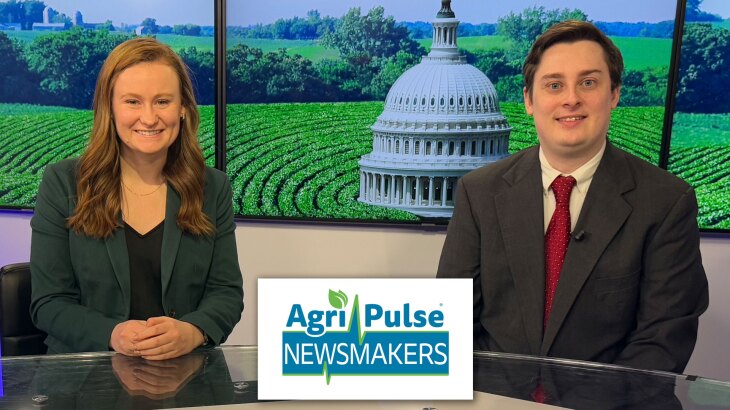A new study regarding the recent cases of High-Path Avian Influenza (HPAI) H5N1 cases in dairy cattle from the University of Copenhagen, Statens Serum Institut Copenhagen, and St. Jude Children’s Research Hospital in Memphis, Tenn., has been submitted for pre-print peer review linking cases in dairy cattle to the mammary gland.
The study’s findings — which are now awaiting certification by a scientific journal through the peer review process — shocked the researchers involved, challenging the notion that HPAI H5N1 is transmitted in cattle through the respiratory system as it is known to do in commercial poultry and wild birds. Rather, they found the largest source of infection in the dairy cow’s mammary glands. The researchers say the unanswered questions posed by their findings concerning the unidentified transmission route of HPAI cattle to the mammary require further and immediate study.
What They Studied
This microbiology study gives new insights into how bovine cases differ from other HPAI cases in poultry, wild birds, and humans by comparing what sialic acid (SAs) receptors dairy and beef cattle share with humans, avians (chicken and wild birds), and ducks. They were able to survey the bovine anatomy of infected dairy cattle where those receptors are located and determine the viral infection levels in those organs.
Receptors are like doorways for viruses to enter our bodies. According to another study from the journal Viruses, SAs are one type of receptor that many viruses, including the flu and coronaviruses, use to get into our cells. When different animals have similar receptors that viruses can latch onto it makes it easier for viruses to jump between species and create new versions of themselves. This is why understanding which animals share these receptors is important for predicting and preventing the spread of diseases from animals to humans.
What They Found
In the process of studying the areas where cattle share SA receptors with humans, poultry, and water foul in a few HPAI-infected dairy cows and comparing them with uninfected beef cattle, researchers primarily found signs of the active virus in the mammary glands of dairy cows.
Specifically, the source of the H5N1 infections in dairy is in the alveoli, the upper part of the mammary glands of dairy cattle above the udder. Large concentrations of viral material shed into the raw milk produced by sick cows were also found. Interestingly, evidence of the virus was not detected in the teats themselves.

Department of Veterinary and Animal Sciences, University of Copenhagen, Frederiksberg C, Denmark
Department of Virus and Microbiological Special Diagnostics, Statens Serum Institut, Copenhagen S, DenmarkDepartment of Host-Microbe Interactions, St. Jude Children’s Research Hospital, Memphis, TN, United States of America
While some traces of the virus were found deep in the respiratory tracts and lungs of the animal tests, the findings suggest those organs were not necessarily harboring infection. The virus was also not harbored in the brains of the cattle, where they are known to be more susceptible to viruses (think “mad cow”).
The avian and human influenza A virus receptors sialic acid (SA)-α2,3 and SA-α2,6 are widely expressed in the bovine mammary gland bioRxiv 2024.05.03.592326; doi: https://doi.org/10.1101/2024.05.03.592326
These cases in dairy cattle differ wildly from the widespread commercial poultry cases of H5N1, which are known to transmit and infect via the respiratory system, as well as from other mammalian cases (like cats), where the H5N1 virus infects the brain.
What They Still Don’t Know
While confirming the presence of infection in the mammary glands of cattle, the findings do not explain how the virus enters and infects the mammary glands (or the “transmission route”), nor how the virus is being passed from animal to animal.
The study also does not fully explain how humans contract the virus. However, it does say clearly that humans share these same types of sialic acid receptors with dairy cattle — and we have them in large concentrations in our eyes. So the human symptoms of pink eye/conjunctivitis align with this science (and findings from other studies).
Researchers in this study emphasize an immediate need for additional studies to determine these critical factors in containing the spread among infected herds and minimizing transmission to humans in direct contact with cattle. Even more critically, these determinations might prevent dairy cattle from becoming a vessel for further mutation of the virus that could lead to widespread human-to-human transmission.
Here’s what they had to say:
What It Could Mean
While also not confirmed (or mentioned in this study), scientists such as T. (Thijs) Kuiken, Professor of Comparative Pathology at the Erasmus University Medical Center, suggest likely sources of cattle infection and transmission are milking machines and common sanitation practices at dairies that do not protect against transmission of viruses that could spread through liquids.
The raw milk left in the machines could later be identified as the transmission source simply because the machines are not cleaned between each animal. Rather, the cow’s udders are disinfected before and after touching the machine, and the machines and parlors are cleaned two to three times per day. Cows are cleaned instead of the liners because repeated chemical exposure to the milk machine liners causes the liners to deteriorate more rapidly. Therefore, the liners become harder to clean and need replacing more often.
Kuiken further hypothesizes that human infections could occur through eye contact with infected raw milk aspirated during the milking process or taking the equipment on and off each cow (since workers typically sit at or near-eye level with the bovine’s mammary). Another possibility is airborne water particles containing infected milk entering the eyes of humans when parlors are cleaned with high-pressure hoses.
Today, Texas authorities also confirmed the human who contracted the virus from dairy cattle was not wearing PPE at the estimated time of transmission, which resulted in an eye infection.





















